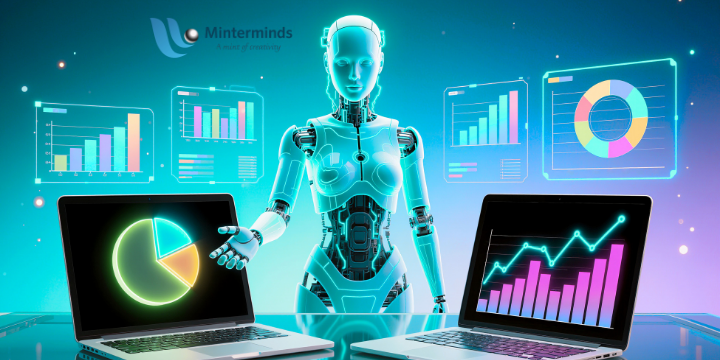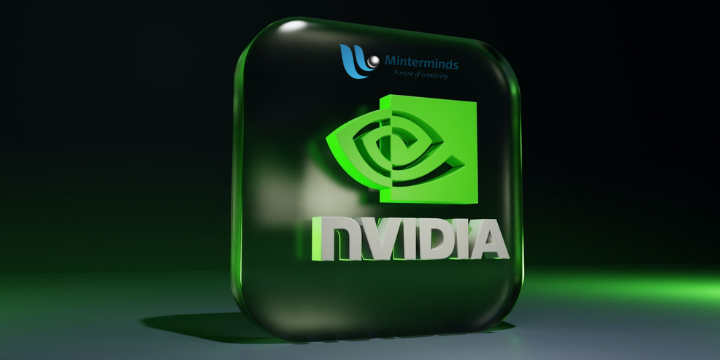Introduction
This is the era of AI. AI is playing an important role in smoothing the workflow of professionals as well as their personal lives. Let’s know the views of tech visionary Dinesh Kumar, CEO and founder of Minterminds, in this blog.
Types of AI Commonly Used Today:
There are commonly 3 types of AI used. Let’s discuss these here:
- Narrow AI: This type of AI is designed for specific tasks like facial recognition, speech analysis, or online recommendations. Use of this type is very common in today’s life.
- General AI: This type of AI is in the research phase. It aims to perform any intellectual task a human can do.
- Machine Learning & Deep Learning: these are subsets of AI. It focused on training algorithms to improve over time with experience.
Everyday Examples of AI at Work
You might be surprised how many ways AI is already part of your day. Let’s break it down:
1. Smartphones and Virtual Assistants
If you are using Google Assistant, Siri, and Alexa, then this means you are using AI in your daily life. These are powered by AI. They understand voice commands. You can set reminders and answer queries in real time.
2. Social Media and Content Recommendations
On social media platforms, the use of AI is common to show you tailored content. AI analyzes your viewing history, interactions, and preferences to deliver what you’re most likely to engage with.
3. Smart Homes and IoT Devices
Smart thermostats and lights are the best example of AI. They learn from your behavior. They automatically adjust based on usage patterns for convenience and energy savings.
4. Navigation and Travel
Google Maps and ride-hailing apps also use AI. They use it to calculate optimal routes based on real-time traffic. AI predicts delays, suggests alternatives, and enhances user experience.
5. Healthcare and Wellness
AI is playing an important role in the healthcare sector. It is also used to diagnose diseases earlier using image recognition and predictive analytics.
6. AI in Diagnosis
AI is also playing an important role in the healthcare sector. Faster and more reliable diagnoses can be done with the AI. Consider, for instance, an app capable of detecting cancer tumors in photos or a device that monitors vital signs. They are helping to improve living conditions, as well as helping mitigate risks.
Existing technologies allow the integration of AI into simple mobile applications designed to support medical personnel. An example is our AI-driven diagnosis system, which offers diagnostic support and clinical decision-making assistance. Our experiment utilized a substantial dataset centered on common diseases in Latin America, consisting of over 25,000 records. Practitioners, especially general practitioners, are often confronted with the challenge of diagnosing and deciding on treatment for hundreds of rare diseases. Additionally, the colossal amount of knowledge to absorb and analyze sometimes culminates in burnt-out medical professionals or patients receiving errors in diagnosis or treatment. An algorithm was devised to help patients identify the most probable disease from a set of 40 common illnesses in their region.
7. Task Management
Managing tasks is also not an easy task. If you found the task management tough, then you can take the help of AI. Artificial intelligence can manage tasks on one’s behalf, opening up larger time horizons for personal scheduling. Virtual personal assistants offer a first step in this direction, handling a range of voice-command requests—from managing calendar appointments to checking the news—which would otherwise demand focused attention from the user.
Online services build on this agenda by organizing human activity across a larger time horizon. They can organize to-do lists at a project level, assign tasks to a group of free individuals, identify natural bottlenecks in cross-team projects, and much more. Services such as Clever Do synchronize to-do lists across different people and devices, whereas Google Now provides personalized reminders that keep users aware of upcoming activities. There exists room for general-purpose task-oriented AI frameworks and toolkits that could increase the scale, scope, and impact of such scheduling and management tools that smooth everyday life.
8. AI in Home Automation
The very basic tasks of everyday life are still quite often done manually, which is not only boring but also likely to cause procrastination. These are some of the reasons why artificial intelligence (AI) can be applied in daily life. Home automation consists, in fact, of a series of home control systems connected to the various appliances. The control operations may aim at increasing comfort inside the house or can have other objectives, such as energy saving and home protection. Artificial intelligence is used within voice assistants and schedules, but also for the activation of a series of devices and appliances when the user needs them. Environment and building management are also part of the category, as they allow users to control the old appliances just with their voice. Travel Planning is a successful example of a specific application of AI in Home Automation.
Wrapping Up
Dinesh Kumar, CEO and founder of Minterminds emphasises the practical benefits of AI in everyday life. AI can smooth the cooperative life as well as the individual life. Minterminds’ team believes in using AI for the betterment of the individual. The team believes in harnessing AI to make life more efficient, secure, and enriching—whether for businesses or individuals.




